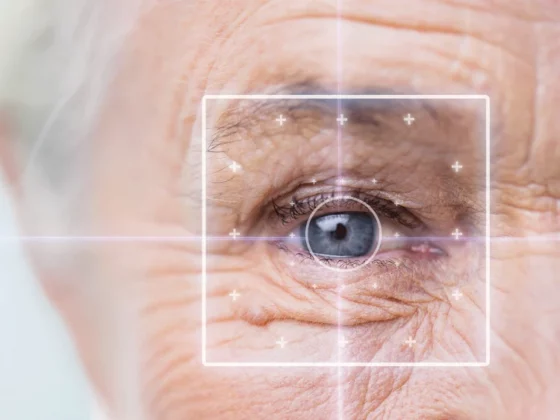Clear vision feels like a miracle, especially when blurred sights become a daily hindrance. But what if there’s a cutting-edge procedure that promises faster recovery and less risk? Welcome to the world of DSEK Cornea Transplant! In this guide, we’ll unravel the magic behind DSEK – a revolutionary approach to corneal surgery. From its standout benefits to the nitty-gritty of the procedure, and even the cost dynamics, we’ve got you covered. If a clearer tomorrow beckons you, dive in to discover how DSEK could be your option to reclaim clear vision.
Contents
What is DSEK Cornea Transplant?
Clear vision is a dance of many elements, with the cornea playing a leading role. When this crucial part of the eye gets damaged, especially its innermost layer – the endothelium – the clarity of our world diminishes. Enter the DSEK Cornea Transplant.
DSEK, or Descemet’s Stripping Endothelial Keratoplasty, is a transformative surgical procedure tailored to rejuvenate the eyesight by replacing the damaged endothelial layer of the cornea. Instead of replacing the entire cornea, which traditional methods often entail, DSEK targets only the affected portion. The result? A healthy donor endothelium seamlessly takes the place of the damaged layer, restoring the eye’s natural function and clarity.
In simpler terms, think of DSEK as a precise, efficient solution where only the problematic part of the cornea is addressed, ensuring minimal intervention with maximum results.
Through DSEK, many have found their way back to clearer, brighter visions, making it a beacon of hope in modern ophthalmology.
The DSEK Procedure Explained
DSEK is not just a medical term; it’s a scientific marvel in the realm of ophthalmology. But what really happens during the procedure?
- Preparing the Eye
Before the actual procedure begins, the eye is numbed using local anesthesia. This ensures that the patient remains comfortable and pain-free throughout the operation.
- Making the Incision
The surgeon starts by making a small incision in the peripheral region of the cornea. This incision serves as the entry point for the donor tissue and is precisely made to ensure minimal disruption to the eye’s structure.
- Removing the Damaged Endothelium
Using specialized instruments, the surgeon gently strips away the damaged endothelial layer. This clears the path for the healthy donor tissue to be placed.
- Inserting the Donor Cornea
The healthy endothelial tissue, harvested from a donor cornea, is then carefully inserted into the eye through the previously made incision.
- Securing with an Air Bubble
Here comes the unique aspect of the DSEK procedure. An air bubble is introduced into the eye, pushing the donor tissue against the back surface of the existing cornea. This air bubble acts as a temporary “glue”, ensuring the donor tissue adheres correctly to its new position. Over time, the tissue naturally bonds with the recipient cornea, but in the immediate aftermath of the surgery, the air bubble is instrumental in holding things in place.
- Monitoring and Recovery
Once the procedure is complete, the surgeon will monitor the eye to ensure everything looks as it should.
In essence, the DSEK procedure is a blend of meticulous skill and advanced medical technology. Through a series of calculated steps, it offers a chance for individuals to reclaim the clarity of their vision, making it a beacon in modern eye care.
Why DSEK Over Traditional Transplants?

In the realm of corneal transplants, several methods promise to restore clear vision. Traditional full-thickness corneal transplants, often referred to as Penetrating Keratoplasty (PK), have been the gold standard for decades. But as with all fields of medicine, advancements pave the way for superior options. Enter DSEK – but what makes it stand out from its traditional counterpart?
Targeted Approach
Unlike PK, where the entire cornea is replaced, DSEK focuses solely on the damaged endothelial layer. By replacing only what’s necessary, the eye remains largely undisturbed, ensuring a more natural post-operative feel.
Reduced Risk of Rejection
One of the primary concerns with full corneal transplants is the body’s potential to reject the foreign tissue. With DSEK’s targeted approach, there’s less foreign tissue introduced into the eye. This significantly reduces the chances of graft rejection, offering patients greater peace of mind.
Faster Recovery
Traditional transplants come with a prolonged healing curve, often taking up to a year or more for vision to stabilize. DSEK, on the other hand, accelerates this timeline. Thanks to the minimally invasive nature of the surgery, many patients report substantial vision improvement within weeks, if not days.
No Stitches, Fewer Complications
DSEK eliminates the need for sutures, a common requirement in PK. Not only does this reduce potential complications associated with stitches, such as infections or astigmatism, but it also leads to a more comfortable post-operative experience.
Preservation of Eye Integrity
With smaller incisions and a less invasive approach, DSEK maintains the eye’s structural integrity better than traditional methods. This means fewer risks associated with potential eye trauma or injuries in the future.
In a world where quick recovery and long-lasting results are paramount, DSEK rises as a beacon of hope. It merges the best of surgical precision with advanced medical technology, making it a preferred choice for many seeking corneal transplants. While traditional methods have their place and may be suited for specific cases, DSEK’s myriad of benefits often makes it the go-to solution for modern ophthalmologists and their patients.
Cost Implications of DSEK Cornea Transplant
The decision to undergo any medical procedure often goes beyond just health implications; financial considerations play a significant role. With DSEK, patients are presented with a modern, efficient solution to corneal issues, but at what price? Currently, the DSEK procedure costs at around 55,000. This might initially seem like a considerable outlay, but it’s essential to view it in the context of the value offered.
When compared to traditional corneal transplant methods, which might sometimes come with hidden costs like prolonged medication, multiple follow-ups, and potential treatment for complications, DSEK’s upfront cost starts to seem more justified.
Furthermore, the long-term benefits, such as a reduced risk of graft rejection and the consequent treatments, add to DSEK’s financial appeal. In essence, while the initial cost might be a point of consideration, the cumulative savings in terms of time, comfort, and potential future medical expenses make DSEK a worthwhile investment in one’s visual health.
Post-Procedure Care and Recovery
 After undergoing a DSEK cornea transplant, understanding post-procedure care and managing expectations regarding recovery are crucial. Here’s a breakdown of what patients can typically expect:
After undergoing a DSEK cornea transplant, understanding post-procedure care and managing expectations regarding recovery are crucial. Here’s a breakdown of what patients can typically expect:
- Initial Rest:
• Patients are advised to rest well immediately after the procedure.
• Avoiding strenuous activities is crucial in the first few days post-surgery. - Use of Medications:
• Patients will likely be prescribed antibiotic and anti-inflammatory eye drops.
• Strict adherence to the medication schedule is essential to avoid complications and aid in healing. - Regular Follow-ups:
• Routine follow-up appointments will be scheduled to monitor the healing process and ensure the donor tissue is integrating well. - Visual Improvement:
• Significant improvement in vision can often be noticed within the first few weeks.
• Maximum visual acuity is generally reached within 1 to 3 months, though it may vary depending on individual healing responses. - Protection of the Eye:
• Avoid rubbing the eyes.
• Wearing sunglasses to protect from sunlight and dust is advisable.
• Protective eyewear may be recommended at night to prevent accidental rubbing during sleep. - Managing Discomfort:
• Mild discomfort or a sensation of something in the eye is normal in the early stages of recovery.
• Over-the-counter pain relief can usually manage any discomfort, but consult with the surgeon or a healthcare provider if discomfort persists. - Long-term Maintenance:
• Although DSEK has a high success rate, maintaining regular eye check-ups is vital to monitor overall eye health.
Remember, adherence to post-operative instructions and regular communication with the healthcare provider are keys to a smooth recovery and optimal outcomes from a DSEK procedure.
Potential Risks and Complications
While the DSEK cornea transplant procedure boasts high success rates and offers transformative results for many, like any surgical procedure, it is not entirely devoid of risks. Let’s explore some of the risks associated with DSEK:
- Graft Rejection:
• Even though DSEK has a significantly reduced risk of graft rejection compared to traditional corneal transplants, there is still a minimal chance. Symptoms might include increased sensitivity to light, redness, vision loss, or pain. - Graft Dislocation:
• The donor tissue might occasionally shift from its intended position before it fully adheres to the recipient’s cornea. This might necessitate further intervention to reposition the graft. - Endothelial Cell Loss:
• A decrease in the number of endothelial cells over time can be an unintended consequence, which might affect the graft’s long-term viability. - Infection:
• As with any surgical procedure, there’s a risk of infection. Proper post-operative care and strict adherence to prescribed medications can minimize this risk. - Increased Eye Pressure:
• Some patients might experience elevated intraocular pressure post-surgery, which could lead to glaucoma in rare cases. - Slow or Abnormal Healing:
• Occasionally, the eye might heal slower than expected or might respond with abnormal healing patterns, which could require additional treatments or interventions. - Vision Aberrations:
• Some patients might experience issues like double vision or glare, especially in the initial stages of recovery. - Hemorrhage or Bleeding:
• A rare but potential risk is the occurrence of bleeding inside the eye during or after the procedure.
It’s important to remember that while these risks exist, they are relatively rare, and many are manageable with timely intervention. It’s crucial to maintain open communication with the healthcare provider, promptly reporting any unusual symptoms or concerns.
In Conclusion
The journey through the intricacies of DSEK has showcased its transformative potential, its advantages, and the necessary precautions. In the vast universe of ophthalmology, DSEK emerges as a beacon for those seeking a brighter, clearer tomorrow. However, as with all medical decisions, the right choice stems from a blend of knowledge, expert guidance, and individual circumstances.
If the haze of cornea-related issues clouds your world, there’s a solution waiting for you. Let our experienced team at EyeMantra guide you back to clarity. Your vision is precious, and we’re here to safeguard it. If you’re considering a cornea transplant, don’t hesitate. Book your free appointment now at 9711116605. Clear vision is not just a dream; with the right help, it can be your reality.



